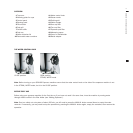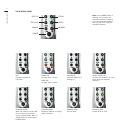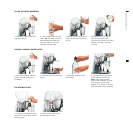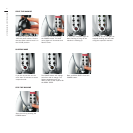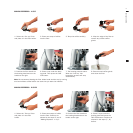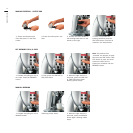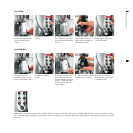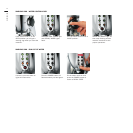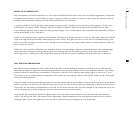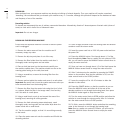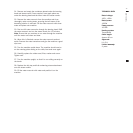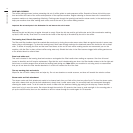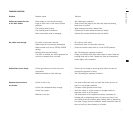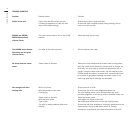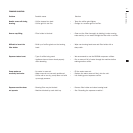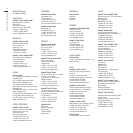
SECRET TO THE PERFECT CUP
13
SECRET TO THE PERFECT CUP
With this appliance and a little experience, you can create café-quality coffee at home. Here are a few helpful suggestions: A single shot
of espresso should result in only 30–35mls of coffee. The grind of coffee is critical. Use a fine to medium grind for domestic espresso
machines. We recommend heating up the filter holder head and the cup before use.
A common mistake is running too much water through the ground coffee, resulting in a thin and bitter tasting espresso. Ensure your
coffee grinds are ‘tamped’ evenly. ‘Tamping’ refers to the amount of pressure with which coffee grinds are packed into the filter.
If your espresso pours too slowly, tamp the coffee grind more lightly, or try a coarser grind. If your espresso is thin and watery, tamp the
coffee grinds harder, or try a finer grind.
Always use the freshest beans or ground coffee available and store in an airtight container in a cool, dry, dark place. Whole bean coffee
stays fresh longer than ground coffee. When grinding your own coffee, never grind more than you will use for immediate brewing. Once
ground, the coffee will begin to loose its flavor. Although not recommended, if you need to keep coffee for extended periods of time, it’s
best to freeze the coffee.
Before use, ensure that the coffee has been allowed to thaw to room temperature. Keep your espresso machine clean and thoroughly
rinsed. Run water through the brewing head and flush the steaming head and the steaming nozzle in fresh water after each use.
Little things count – warming your cups, using filtered water and serving the coffee immediately after brewing do make a difference.
EASY STEPS FOR FROTHING MILK
Milk frothing means steaming the milk to heat it and create froth. Just like making an espresso, perfecting the art of milk texturing
takes time and practice. Attach the froth-enhancing attachment to the end of the steam nozzle on your espresso machine. You can also
choose to steam the milk without the attachment. Using fresh, cold milk, fill the stainless steel frothing jug to no more than 1/3 full.
The amount of milk you steam should be adequate for the coffees you are preparing. Keep in mind that the volume of milk will increase
during the texturing process.
Insert the steam nozzle into the frothing jug and turn the water control knob to open position. Lower the jug so that the tip of the steam
nozzle is just below the surface of the milk and place your hand on the side of the jug. Move the frothing jug so that the steam nozzle is
to one side, this will create a whirlwindmotion in the milk. As the steam heats the milk, the milk will begin to rise. Follow the level of the
milk by lowering the jug, always keeping the tip of the steam nozzle just below the surface.
Once the milk has expanded to double its original volume, lower the steam nozzle further into the milk and continue the whirlwind
motion. This will give the milk a fine texture with no big bubbles. Cease steaming when the frothing jug becomes too hot to continue
holding the palm of your hand against the side. Pour the textured milk into your espresso as soon as possible.



